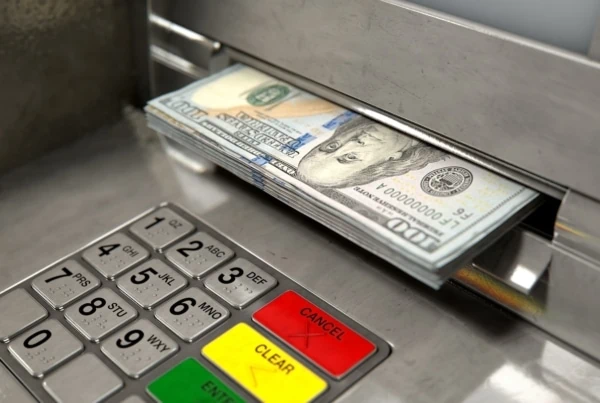How best to invest for your grandchildren? It’s a question that many grandparents ask themselves when considering what to do with their savings and investments. If the answer is “well,” then you should be focusing on investing strategies that will best benefit your grandchildren.
Many grandparents spend time trying to figure out how best to save money, but fail to invest it in ways that would help their grandchildren. This is a huge mistake.
In this article, we’ll discuss the best investments for grandchildren and how you can start investing for them today!
Table of Contents
Best Investment Accounts for Grandchildren—Our Top Picks
|
Primary Rating:
4.3
|
Primary Rating:
4.5
|
|
No monthly fees.
|
No annual, opening, or closing fees and commission-free equity trading.
|
Why Invest for Grandchildren?

The cost of raising children has climbed considerably in recent years, along with account balances for many grandparents who have benefited from a series of strong economic cycles since the 1950s and years of compounding returns. While not always feasible, many grandparents choose to invest for their grandchild’s future to help them get a head start in life.
Investing—and saving—are two of the most important things you can do for your grandchildren, especially as college tuition costs continue to climb. Fortunately, these investments don’t have to be big or complicated; there are plenty of ways that every grandparent can help without breaking the bank.
By starting early and investing steadily, the money you grow for them can benefit them financially, personally and professionally.
What Costs Do Grandkids Face?

The cost of college tuition is sky-high these days. In fact, for many families it’s the most expensive cost they’ll ever have to face! And that cost just keeps rising every year. What this means for grandparents with grandkids destined for higher education, trade schools, apprenticeships or other training programs required for developing high income skills (or soon headed there) is that you need to be saving and investing now if you want to avoid taking on costly student loans.
And, before you invest in anything else for your grandkids, take a look at their cost of college. This may be the single most important investment decision that will impact them throughout their lives.
Best Investments for Grandchildren
The best investments for grandchildren are those that pay off long-term costs like these and protect against future ones too!
Consider making some of the best investments for grandchildren to give them a head start and not fall into a financial hole early in life.
Investment Accounts for Grandchildren: Taxable
Let’s start with traditional investment accounts. As a group, they’re typically referred to as “taxable” accounts because actions within the account are subject to taxation. That’s in contrast to many retirement accounts, such as 401(k)s and individual retirement accounts (IRAs), which have certain tax benefits.
1. Investing Apps

Investing apps are as straightforward as they sound—they’re apps that allow people to access publicly traded investments, such as stocks, exchange-traded funds (ETFs), and mutual funds.
In many cases, investing apps for kids and/or teens tend to combine brokerage capabilities with other financial functions such as saving, spending, and budgeting. Here’s one of our favorite such apps:
Cash App Families (Cash App’s Debit Card for Teens)

- Platforms: Web, mobile app (Apple iOS, Android)
- Price: Free* (no monthly fees)
Does your teen need to start learning smart saving, spending, and even investing habits? Cash App Families can accomplish all three—with no monthly fees—putting the power of Cash App into your teen’s hands while keeping their financial safety firmly in yours.
Teens get an account with a designable Cash App Visa debit card, which they can use to spend money where Visa is accepted. Meanwhile, access to Cash App allows them to save money toward specific goals, send money to friends, accept offers for instant discounts at their favorite places, and check out securely in stores and online by using a QR code.
If your teen direct-deposits $300 or more each month, they’ll also unlock a bevy of other features, including getting paid two days earlier, no ATM fees¹ when withdrawing from more than 40,000 in-network ATMs, and one waived out-of-network ATM withdrawal per month.
Cash App Families even has an investing feature with fractional shares, allowing kids to purchase as little as $1’s worth of stocks and Bitcoin (parent permission is required).²
Meanwhile, parents/guardians who sponsor the teen** enjoy some of the best oversight features among teen debit cards. You can monitor your teen’s activity from your own Cash App or receive real-time transaction alerts for their payments and purchases. You control which features—stocks, Bitcoin², sending money, the Cash App Card—your teen can access, and certain spending categories are auto-blocked for teens. can also send money for allowance whenever they want, and built-in tools allow parents and teens to budget and save together.
Parents/guardians must download Cash App (also free), then invite their teen to create a sponsored account. Cash App Families can be used by teens ages 13-17. Use our link to learn more about or sign up with Cash App today.
2. Custodial Accounts

Uniform Gifts to Minors Act (UGMA) accounts and Uniform Transfers to Minors Act (UTMA) accounts are custodial accounts that allow you to put money and/or assets in trust for a minor child or grandchild.
As the custodian, or trustee, you manage the account until the child reaches the age of majority (18 to 21 years of age, depending on your state). Once a grandchild reaches the age of majority (adulthood), they become the account owner and can do as they please with the funds. This means they don’t have to use the money for educational expenses if they don’t wish.
While no contribution limits exist for grandparents to give money to grandkids, they can contribute up to $18,000 per year per individual ($36,000 per married couple who files jointly) under the annual gift tax exclusion in 2024 ($19,000 and $38,000 in 2025, respectively).
One consideration when deciding if a custodial account makes sense for the child is that the balance in a custodial account will count against your child’s assets on the Free Application for Federal Student Aid, or FAFSA.
Students are expected to contribute a higher percentage of savings versus what their parents might be able to, usually 20% vs. a maximum 5.6% of savings for the parents.
You may consider a popular custodial account like E*Trade, an industry-leading brokerage.
E*Trade (Top Free Custodial Account)

- Platforms: Web, mobile app (Apple iOS, Android)
- Price: No monthly fees or trading commissions on stocks and ETFs through E*Trade’s Custodial Account
Most people know E*Trade as one of the leading providers of individual brokerage accounts, but you can also put the powerful platform to work saving for your child’s future, though a custodial account (and even a custodial IRA).
E*Trade’s custodial account for teens (and generally any minor) allows you to open up a custodial account that offers the chance to build a personalized portfolio through thousands of stocks, bonds, ETFs, and mutual funds, or you can have E*Trade select your holdings for you through its Core Portfolio robo-advisory service (minimum account size of $500 is needed to use this product). Further, you can choose to open a traditional custodial IRA or a custodial Roth IRA for children under age 18 who have earned income.
Just like with its individual brokerage accounts for adults, E*Trade custodial accounts offer zero-commission stock, ETF, and options trading. It also has a leg up on some platforms by offering $0-commission mutual fund, Treasury, and new-issue bond trading.
And if you want to learn more about investing—or want your young one to learn alongside you—E*Trade also boasts educational resources, including articles, videos, classes, monthly webinars, and even live events.
For a limited time, E*Trade offers a new account funding bonus when you use reward code “OFFER25.” Check out our info box below to check out the different deposit tiers and their corresponding bonuses, or click “Open Account” below to open a free E*Trade custodial account.
- E*Trade is one of the best online and mobile trading platforms among discount brokers, offering a full range of investments (including professionally managed accounts). It allows you to invest in stocks, ETFs, mutual funds, options, bonds, futures, micro futures, and futures options.
- $0 commission trading for online U.S.-listed stocks, ETFs, options, mutual funds, Treasuries, and new-issue bonds. (Options have a 65¢ contract fee, or 50¢ at certain volume thresholds.)
- Help build your child’s future by managing their portfolio until they come of age without contribution or income limitations.
- Get easy access to your cash with a free debit card, checking, and Bill Pay
- Opening an account is easy and only takes a couple of minutes.
- Bonus: Get between $50 and $10,000* when you click the box below, then open and fund a new investment account using promo code "OFFER25."
- Excellent selection of available investments
- Commission-free mutual funds and Treasuries
- Automated portfolio builders and prebuilt mutual fund and ETF portfolios
- Separate apps for power users and casual users
- Limited availability of fractional shares (only in DRIP plans or robo-created portfolio)
- No direct cryptocurrency trading
Investment Accounts for Grandchildren: Tax-Advantaged
3. 529 Plans: Save for College and Qualified Education Expenses Tax Free
A 529 plan is a special tax-advantaged investment plan that lets families save for the current and future costs of schooling for a beneficiary.
Traditionally, these plans could only cover the qualified educational expenses for college but tax reform broadened the eligible expenses to cover K-12 costs as well.
When thinking of one of the best ways to invest $1,000 for a child or more each year, consider a 529 savings plan. These can help your grandchild financially while limiting your own tax liability when you liquidate the investments held in the account.
Plans have high limits on how much you can contribute to them. Contributions are made after-tax this way and grow tax free from federal income tax like a Roth account if the funds get used for qualified educational expenses. Most states also allow tax-free withdrawals as well.
You can contribute up to the annual federal gift tax exclusion amount each year, which is $18,000 per person per individual ($36,000 for married couples who file jointly) in 2024 ($19,000 and $38,000 in 2025, respectively).
Like with custodial accounts above, this “annual exclusion” represents the maximum amount you can transfer as a gift to each person without incurring a gift tax.
If you can, you might consider “superfunding” your grandchildren’s 529 plan by contributing five years of gifts all at once per grandchild per person. This provides an ample amount of money upfront without incurring the gift tax.
Understandably, not every grandparent can swing such a contribution, especially for multiple grandkids ($180,000 per grandchild if both grandparents contribute in 2024, $190,000 in 2025) to cover the entire cost of college. But, if it’s possible, this let’s the money compound over multiple years from when your grandkids are young kids.
Be aware, though, using this option carries complicated rules, so consider getting the help of a tax professional to navigate these contributions successfully. Also, 529 plans recently got the green light to improve how you can use the funds held within the account appropriately (i.e., without incurring the 10% withdrawal penalty).
The SECURE Act created multiple provisions intended to improve retirement planning and savings plans.
The new rules from this law allow 529 plan funds to go toward paying off up to $10,000 in student loans as well as pay for expenses related to registered apprenticeship programs.
529 Plans come in two types:
College Savings Plans
College Savings Plans replicate similar mechanics of other tax-advantaged savings plans like 401(k)s and individual retirement accounts (IRAs).
Contributions you make get invested into mutual funds or other investment vehicles like age-based investments called target date funds.
These differ from the types you see in retirement plans though, because these have underlying investments that become more conservative as your grandchild nears college age, not retirement. These plans get administered at the state-level.
One option to consider for opening a 529 College Savings Plan is through the company Backer. The company provides top-tier 529 Savings Plans which can collect gifts from family and friends through social savings.
You can share an invite code for friends and family to make contributions to a 529 Savings Plan for birthdays, holidays or other noteworthy events (like making honor roll!).
- Backer allows you to invest your educational savings tax-free in a 529 plan and also allows for family and friends to help you to save more.
- Use low-cost index funds to invest in different asset classes, including stocks and bonds.
Related: Best Acorns Alternatives: Micro-Investing Apps to Use
Prepaid Tuition Plans
While not available in every state, prepaid tuition plans (also called guaranteed savings plans) allow you to freeze today’s tuition rate for when your grandkid attends college in the next 18 years.
Essentially, these prepaid tuition plans act like a presale on college tuition and can be an alternative manner for building college savings.
The tuition program pays back the state’s eligible institutions to any beneficiaries in college. If your grandchild ends up attending a school out of state or at a private institution, you can transfer the value or apply for a refund.
4. Traditional and Roth IRAs
An individual retirement account, or IRA, is a tax-advantaged savings account where you keep investments such as stocks, ETFs, bonds, mutual funds and other asset types.
These accounts typically start with young adults because they require the account owner to have earned income.
However, if your grandchild has a summer job or other form of documented income, you can open a custodial Roth IRA (or traditional) for them and match their contributions up to the annual contribution limit.
Then, you can help your grandchildren to choose the best investments that grow with tax advantages from their start as young children and onward into adulthood.
If you’d like to contribute from your IRA toward their education expenses, you can. While you don’t need to begin taking required minimum distributions (RMDs) until reaching age 73, you can begin as early as when you reach age 59½.
In fact, you can also start earlier if necessary. You can withdraw money from your traditional or Roth IRA before age 59½ without paying a 10% additional tax if the funds go toward paying for qualified higher education expenses for yourself, your spouse, your children or grandchildren in the year you make the withdrawal.
This waiver only applies to the 10% penalty as you’ll still need to pay income taxes on the distribution unless it is designated as a Roth IRA.
Though, using these accounts to pay for your child or grandchild’s college education can come with its own set of drawbacks:
- It takes money out of your retirement fund — taking already limited funds you can’t contribute again unless you still work — so make sure you are well-funded outside of the IRA.
- IRA distributions can have unintended consequences such as compromising eligibility for need-based financial aid in the year following withdrawal.
If you want to avoid dipping into your retirement savings, you may be able to set up a Roth IRA in your grandchild’s name. Though, this comes with a catch. Namely, the grandchild (and not you) must have earned income from a job during the contribution year.
You have the ability to fund the annual contribution to the maximum amount so long as they have enough in earnings to cover what you deposit. In fact, the IRS doesn’t mind where the money originates, so long as it doesn’t exceed what your grandchild earns in a year.
For example, if your grandchild works as a lifeguard and earns $1,000 for the summer, you can let your grandkid keep the money and you contribute to their Roth IRA instead.
That way, your grandchild can do something else with their earnings while you still set aside money in their retirement account.
Remember, they need to have earned income for anyone to contribute to their custodial IRA.
How to Open a Custodial IRA for Your Grandchild
If you wish to open a custodial IRA for your grandchild, your job as the custodian is to control the assets in the account and manage them on their behalf until reaching the age of termination for their state of residence.
At which point, the assets and the account turn over to their possession.
Work with them while they’re young and looking to engage in teenage investing opportunities. This can provide valuable information and guidance as a way for teaching kids about money management.
You can use this to help them begin financial planning for the long-term.
Here’s how to do it: If your grandchild is underage (under 18 or 21 years old, depending on your state of residence), you will find many of the best stock investing apps for beginners as well as banks and mutual funds will let you set up a custodial IRA.
One such app, E*Trade, allows you to open a custodial IRA for free.
E*Trade’s IRA for Minors offering allows you to open up a traditional custodial IRA or a custodial Roth IRA for children under age 18 who have earned income. Within the account, you can build a personalized portfolio through thousands of stocks, bonds, ETFs, and mutual funds, or you can have E*Trade select your holdings for you through its Core Portfolio robo-advisory service.
Consider opening a custodial IRA through E*Trade by clicking the “Open Account” button below.
Related: Best Stock Trading Platforms for Beginners
5. Coverdell Education Savings Account
Coverdell Education Savings Accounts are a type of investment account which make it easier to pay education expenses for your grandchildren.
Much like 529 plans above, Coverdell ESAs have money grown tax-free at the federal level (most states allow this as well) if used for qualifying education expenses.
These accounts also allow for funds to go toward qualified education expenses of K-12 grade schooling in addition to college costs. If used for nonqualified expenses, you will incur a 10% penalty as well as tax on any gains recognized in the account at the time of sale.
You cannot deduct Coverdell contributions and you must make them before your grandchildren reach the age of 18 (or later if they qualify as a special needs beneficiary by the Internal Revenue Service).
You can set up more than one ESA for a single beneficiary, but like IRAs, the maximum contribution applies across these multiple accounts (not per account) and is limited to $2,000 per year.
Investments for Grandchildren
1. Stocks
You can use UGMA or UTMA accounts to hold many different types of assets. Commonly, you can open a custodial brokerage account to begin investing on behalf of the child.
You can use this as an opportunity to teach your grandkids about investing, the importance of thrift, or general money management skills.
To get them interested in investing, consider creating a portfolio of stocks for kids, with companies they’ll likely recognize from their daily lives.
Companies could include Apple, Google, Tesla, McDonald’s, Disney and many more. With a strong portfolio of blue chip stocks, your grandkid’s account balance could grow steadily and consistently across multiple years.
Be mindful that these accounts do carry some tax breaks related to investment income but must still pay above certain levels due to the Kiddie Tax.
This tax requires parents to pay the marginal income tax rate on all unearned income realized in the account. This rule applies to all unearned income for kids under 19 or full-time students under 23.
2. Exchange-Traded Funds (ETFs)
Exchange traded funds (ETF) have become increasingly popular over the last two decades.
These act like mutual funds by holding an underlying, diversified portfolio of stocks, bonds, or other investments but trade openly on the stock market exchanges. Because of this feature, they often have better liquidity than mutual funds because they trade throughout the day.
ETFs can represent both passive and active investment options. Passive ETFs tend to be index funds which track a broader market index but also a specific sector or group of related assets.
Investing in index funds provides instant diversification in one investment with low expenses. You don’t take on unnecessary risk from actively picking stocks or attempting to beat the market.
Because they attempt to replicate the performance of a public benchmark or sector, management expenses are negligible and mostly come down to the stock trading commissions you might face if not using a free stock trading app to invest.
Active ETFs can charge much higher management fees because they actively trade in and out of securities to achieve some stated investment objective.
ETFs can pay dividends, an excellent passive income idea to consider for building an income portfolio. They can also act as high-return investments over time.
3. Mutual Funds
Mutual funds allow you to pool your money with that of other investors, which creates a larger collection of stocks, bonds and other investments. This is often referred to as a portfolio.
When a mutual fund’s securities’ values change, the net asset value (NAV) is adjusted accordingly by calculating how much more—or less—the fund would have to sell its investments for in order to fulfill shareholder redemptions.
This price changes based on the value of the securities in your portfolio at the end of each market trading day. Mutual fund investors don’t actually own the underlying securities, just the mutual fund shares themselves.
Mutual funds come in two types: passively managed and actively managed mutual funds.
In the case of active mutual funds, a portfolio manager or team of managers decides which investments to buy and sell. The primary goal of portfolio management is to outperform a comparable benchmark, justifying using their investment vehicle instead of simply investing in an index fund.
Passively managed mutual funds simply attempt to recreate the performance of a benchmark like a stock index.
You can invest in mutual funds through IRAs for your grandchildren and allow them to reap the long-term rewards of compounding returns in a diversified investment.
4. Savings Account
Starting to save can seem daunting, but parents and grandparents can address that head on by making it an easy task for kids through repetition and understanding.
If you’ve already conquered the ability to save, be that family member who helps your grand kids learn about the importance of opening a savings account early and developing good money habits as early as possible.
If you want to help your grandchildren build a savings account balance or even help them open an account through a banking app for minors to handle money from their allowance or a part-time job, you’ve got options to make building savings a habit.
Doing so will provide them with an opportunity to earn some interest on their savings account, while also learning how to bank.
Teen checking accounts even come with debit cards for kids that allow parents to monitor spending and set guardrails for how they spend.
When choosing a youth savings account, you’ll want to pay attention to the following items:
- interest rate
- any fees or minimum balance requirements
- how the grandchild can access the funds
- how the account can grow with them as they mature.
Related:
- Best Debit Cards for Teens
- Best Prepaid Debit Cards for Teens & Families [Reloadable]
- Best Free Debit Cards for Kids & Teens [Earn, Save & Spend]
Where to Open Investment and Bank Accounts for Grandchildren
Now that you know more about the types of investment accounts available for you to open on behalf of your grandchildren, you might want to consider which investment options to pick.
Thankfully, there are many all-in-one money apps for kids, allowing your grandkids to start saving, learn about spending and also how to invest money for the first time.
E*Trade (Our Top Pick for Custodial IRAs)
Related: Best Bar Mitzvah Gift Ideas [Financial Gift Ideas That Last]
Greenlight App
- Greenlight is a financial solution for kids that allows them to spend with a debit card, earn money on savings, and even invest their money.
- Parents can use this app to teach kids how to invest with a brokerage account through Greenlight Max and Greenlight Infinity plans.
- Greenlight offers flexible parental controls for each child and real-time notifications of each transaction. And it's the only debit card that lets you choose the exact stores where kids can spend on the card.
- Families can earn 2% (Core), 3% (Max) or 5% (Infinity) per annum on their average daily savings balance of up to $5,000 per family. Also, Max and Infinity families can earn 1% cash back on their monthly expenditures.
- Unlike many apps that simply provide features and controls, Greenlight is also designed to spark discussions with children about spending, investing, and more, fostering a better educational experience.
- Best-in-class parental controls (can prohibit specific stores)
- Can add brokerage account to invest in stocks
- Intuitive Parent and Kid apps
- Competitive cash back and interest rates
- High price points
- No cash reload options
- No parent / child lending
Related: GoHenry vs. Greenlight
Acorns Early

- Acorns Early (formerly GoHenry) is a debit card and financial app designed to provide education, experience, and confidence in saving, spending, and earning, to kids ages 6-18.
- Kids get a Mastercard debit card that allows them to spend in stores and online, and withdraw money from ATMs.
- Kids can also earn allowance, complete chores for money, set savings goals, even give to charity.
- Parents can rest easy knowing there are plenty of guardrails in place, including chip-and-PIN technology, Mastercard Zero-Liability Protection, and parental controls such as spending notifications, card locking, and adjustable spending limits.
- Acorns Early also provides educational resources tailored for kids of all ages.
- GoHenry's reputation for excellent customer service among kids' debit card providers will continue through Acorns Early, which is offering everyday phone availability and 24/7 chat support.
- Subscribing to Acorns Gold includes not only a free Acorns Early account for up to four children, but also Acorns Early Invest, a UGMA/UTMA custodial account where you can save toward your kids' future and get a 1% match on up to $7,000 in contributions annually.
- Special offer: Get a free 30-day trial and $5 allowance when you sign up.
- Strong parental controls (including card-use controls and adjustable spending limits)
- Chores and allowance
- FDIC insurance
- Allows for ACH payments
- Convenient "Giftlinks" for non-accountholders to give money to kids' accounts
- Customizable cards ($5-$6)
- No investing feature
- No fee-free ATM network
Related: Best Acorns Alternatives: Micro-Investing Apps to Use
Other Assets to Give Your Grandkids
1. Savings Bonds
When my grandparents invested for me in the 1990s, they did so by purchasing savings bonds in my name. My parents followed suit and used these to set aside money for me to pay for the costs of college.
Once I reached college age, I had worked hard enough to earn scholarships and financial assistance to pay for private college without need for this savings. The college costs I encountered thankfully made the college savings they had accumulated for me unnecessary, allowing me instead to cash out these bonds and begin investing in the stock market as a teenager.
But for grandparents who want to save money for their grandkids with these zero risk financial products, you can still do so directly through TreasuryDirect.gov.
You will no longer receive physical bond certificates to hold but can still cash them at a financial institution if you have some unredeemed savings bonds for a beneficiary.
These savings bonds grow tax free from state or local taxes, but you must still pay federal taxes on them when redeemed. Rates on these bonds have fallen dramatically in the last decade but if you can manage to hold on to them for at least 20 years, the Treasury guarantees to double the original amount paid as a minimum level of return.
Consider investing in savings bonds if you plan to start at least 20 years in advance and want a riskless investment. Otherwise, you’ve got better options listed above for growing an investment portfolio your grandchildren can use to their advantage.
2. Cash
The annual exclusion refers to $18,000 in gifts you can give to as many people as you want annually in 2024 ($19,000 in 2025).
Married couples can combine their annual exclusions to give up to $36,000 ($18,000 x 2) to as many individuals as they like per year—tax-free ($38,000 in 2025).
As a grandparent, you can provide a financial gift for a child up to the annual exclusion each year without paying taxes. These gifts can help to pay for college or other higher education costs.
If you make financial gifts in excess of the annual exclusion, they count against the lifetime exemption from estate taxes, which comes to $13.61 million per individual and $27.22 million per couple in 2024 ($13.99 million and $27.98 million in 2025, respectively).
If you have concerns about the lifetime exemption as a grandparent, you can help your grandchild pay for college while limiting your own tax liability. You can do this by making a payment directly to their public college, private school or any other type of higher-education institution.
If grandparents pay educational expenses directly to the school, these costs do not count toward the annual exclusion. This can protect against exceeding the annual exclusion and lifetime exemption while still paying for college tuition and other college expenses charged by the school. Paying for the beneficiary’s college costs like this provides tax advantages as well as potentially lowering the possibility of coming into contact with the federal gift tax or estate taxes.
As an example, even if you send $25,000 a year to your grandchild’s college, the amount over the annual exclusion of $18,000 ($7,000 in this instance) would not count against the lifetime exemption.
How to Gift Stock

You can gift stock directly without needing to sell before gifting the shares to your grandchildren. If you want to invest for your grandchildren, a variety of options exist.
However, transferring stocks from your account to theirs involves some additional steps that may not be obvious beforehand.
- Capital Gains Taxes
When you sell stocks for more than your cost basis, you are liable for capital gains taxes. If you transfer appreciated stock, you nor the recipient will encounter capital gains. Your basis and holding period transfer with the stock position.
- Gift Tax Rules
Next, you’ll also need to understand a bit about gift tax rules. For most individuals, this won’t pose a problem so long as the annual amount of gifted stock falls below $18,000 per person (or $36,000 per married couple filing jointly).
- Financial Control
Finally, you’ll also want to consider how to maintain control over these positions. Giving stocks as a gift means relinquishing control of the stock to the recipient.
One way to invest for your grandchildren is through a trust. You can place limitations on the funds given in this type of investment scheme.
Consider this resource for learning more on how to gift stock.
Investing for a Grandchild: Saving for Their Future
To ensure that they will be more successful than their parents, grandparents need to invest in the future success of their grandchildren.
Properly investing is a way for grandparents to demonstrate that they are committed to seeing generations succeed rather than struggle even if this means changing some things about their lives.
By providing financial support to their grandchildren, grandparents can empower them with the resources they need to live a better life.
A long-term goal for many parents and grandparents is that one day both children and grandchildren will be able to sustain themselves without any outside help. Investing in a grandchild’s future shows you are committed to this goal.
Disclosures
Cash App Families
Cash App is a financial services platform, not a bank. Banking services provided by Cash App’s bank partner(s). Prepaid debit cards issued by Sutton Bank. Member FDIC. See Terms and Conditions. Direct deposit and instant discounts provided by Cash App, a Block, Inc. brand.
* Free Cash App Cards come in black, white, pink, or glow-in-the-dark. Card use fees apply.
** To view the eligibility requirements for sponsoring a teen, please visit the Sponsored Accounts section of the Cash App Terms of Service.
*** Your balance is eligible for FDIC pass-through insurance through our Program Banks Wells Fargo Bank, N.A. and/or Sutton Bank, Members FDIC for up to $250,000 per customer when aggregated with all other deposits held in the same legal capacity at each Program Bank above, if certain conditions are met. Cash App is a financial services platform, and not an FDIC-insured bank. Prepaid debit cards issued by Sutton Bank, Member FDIC. See terms and conditions (https://cash.app/legal/us/en-us/card-agreement).
Cash App is a financial services platform, and not an FDIC-insured bank. Prepaid debit cards issued by Sutton Bank, Member FDIC. See terms and conditions.
¹ Cash App reimburses ATM fees for all in-network withdrawals when you deposit at least $300 monthly of Qualifying Deposits into Cash App, or spend $500 or more in Qualifying Purchases using your Cash App Card or Cash App Pay in a calendar month. Service fees may apply. See terms https://cash.app/legal/us/en-us/tos) for more details.
² Brokerage services provided by Cash App Investing LLC, member FINRA/SIPC, subsidiary of Block, Inc. Bitcoin services provided by Block, Inc. Bitcoin services are not licensable activity in all U.S. states and territories. Block, Inc. operates in New York as Block of Delaware and is licensed to engage in virtual currency business activity by the New York State Department of Financial Services. Investing and bitcoin are non-deposit, non-bank products that are not FDIC insured and involve risk, including monetary loss. Cash App Investing does not trade bitcoin and Block, Inc. is not a member of FINRA or SIPC. For additional information, see the Bitcoin and Cash App Investing disclosures. Additional fees for securities may apply such as regulatory fees and fees to transfer securities externally. Please see our House Rules for more information. Fractional shares investing may involve additional risks such as non-transferability. For additional information regarding the unique risks and limitations of fractional shares, please see your Investing Customer Account Agreement.
³ Customers can qualify for Cash App Green by spending $500 in Qualifying Purchases using your Cash App Card or Cash App Pay per month, or by depositing $300 of Qualifying Deposits per month. Eligibility restrictions apply to some benefits. See Terms and Conditions (https://cash.app/legal/us/en-us/tos) for more information. To earn the highest interest rate on your Cash App savings balance, you need to (a) have a Cash App Card, or sponsor one or more sponsored accounts, and qualify for Cash App Green or (b) have a sponsored account with sponsor approval. Customers can qualify for Cash App Green by spending $500 in Qualifying Purchases using your Cash App Card or Cash App Pay per month, or by depositing $300 in Qualifying Deposits per month. See terms and conditions for more information on how to qualify. If you are signed up to earn interest, Cash App will pass through a portion of the interest paid on your savings balance held in an account for the benefit of Cash App customers at Wells Fargo Bank, N.A., Member FDIC. Exceptions may apply. Savings yield rate is subject to change.


















![Best Cash Alternatives [Get Yield on Short-Term Investments] 54 best cash alternatives](https://youngandtheinvested.com/wp-content/uploads/best-cash-alternatives-600x403.webp)


